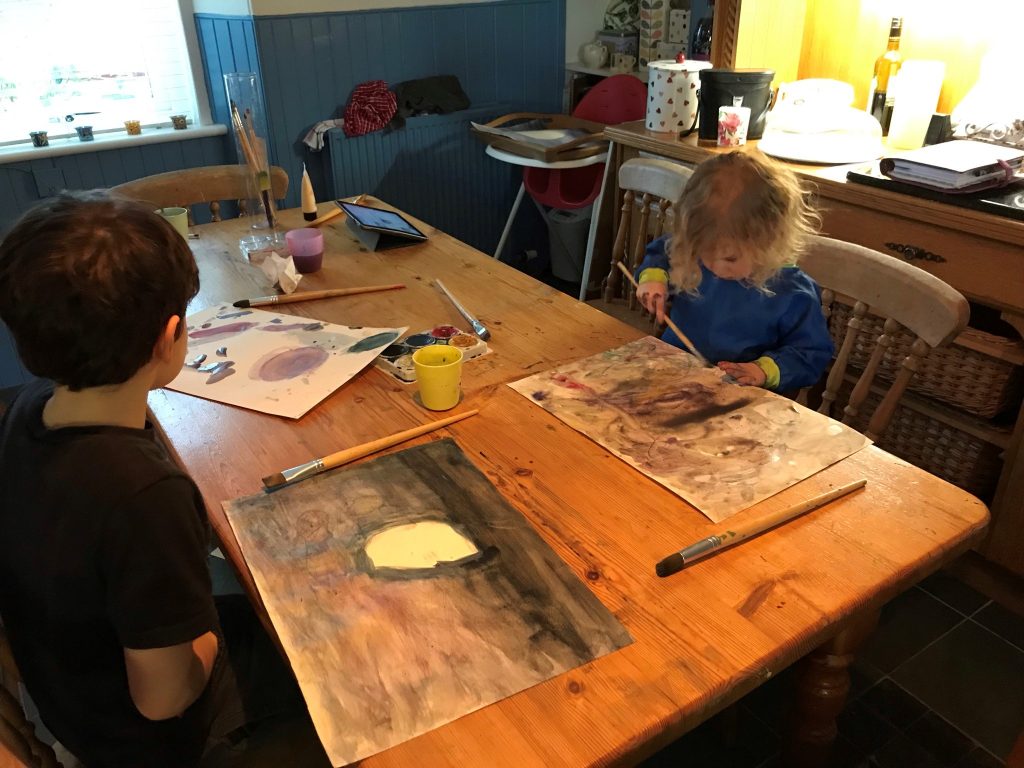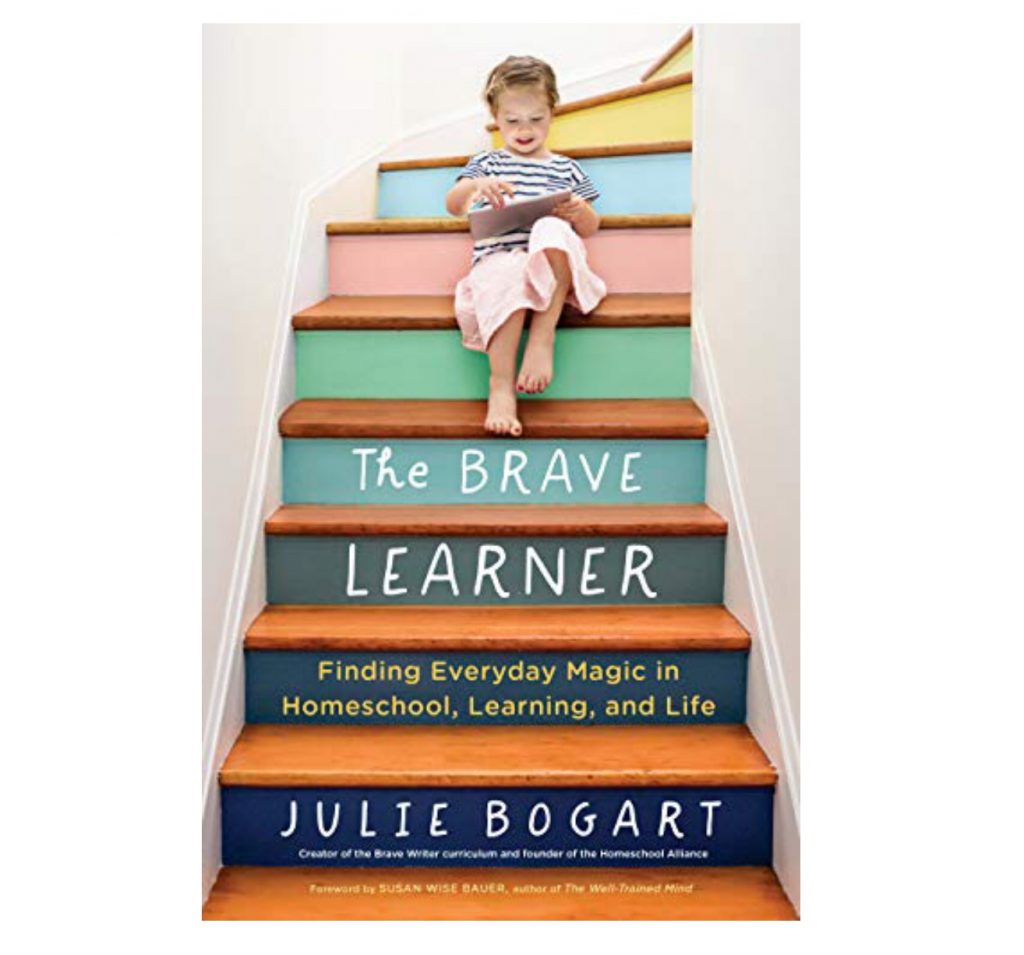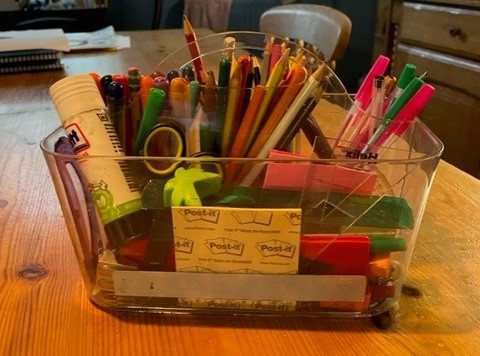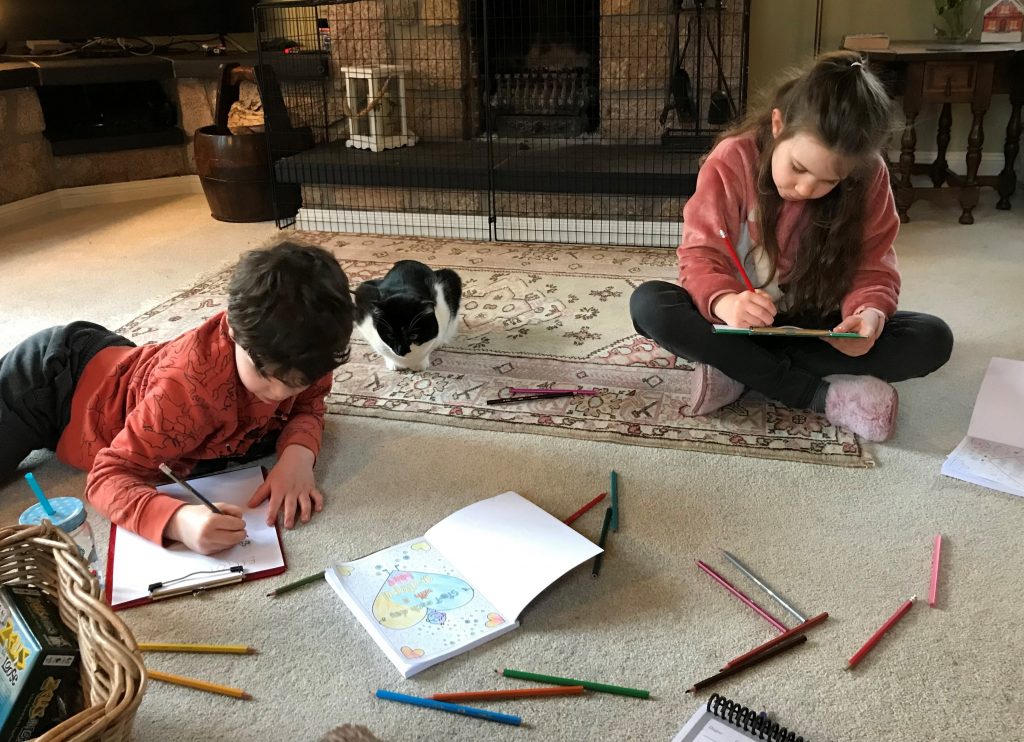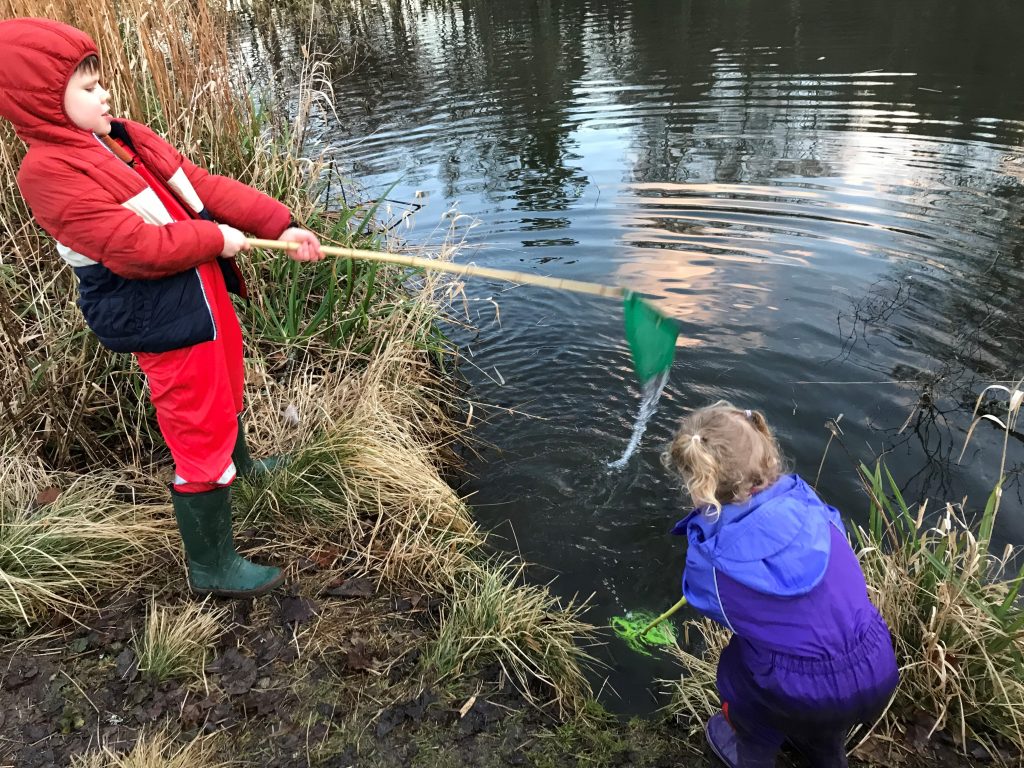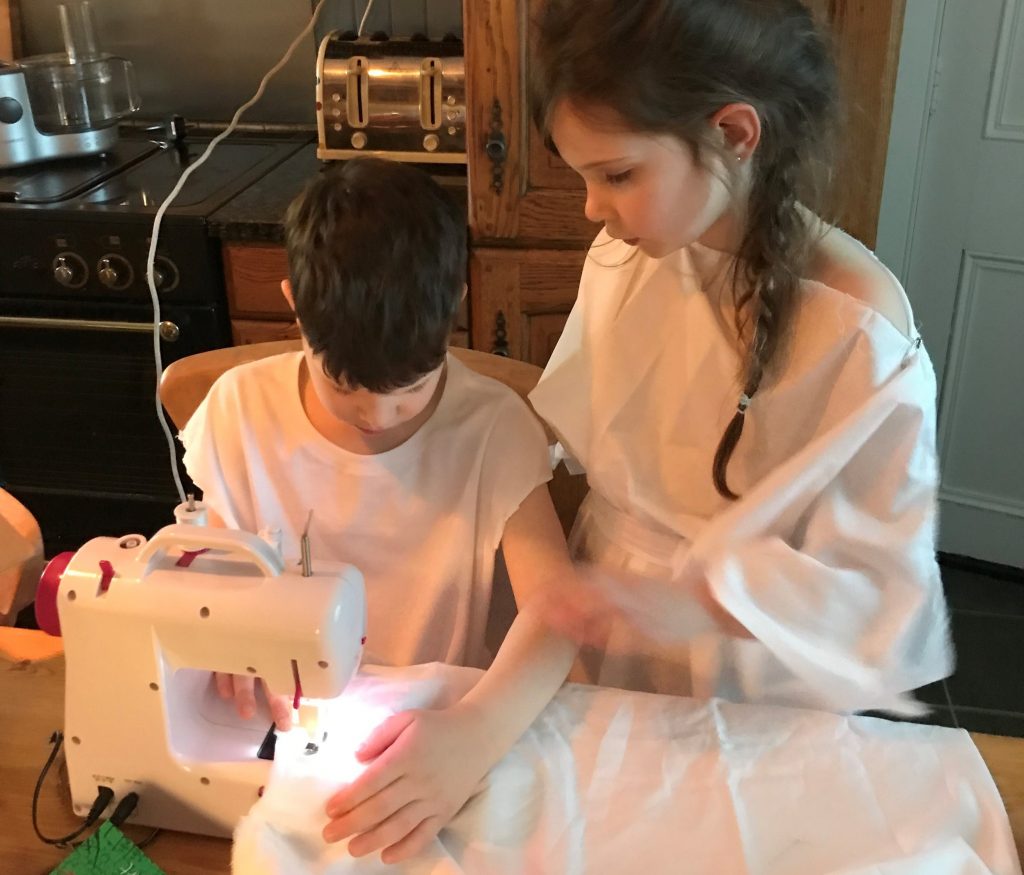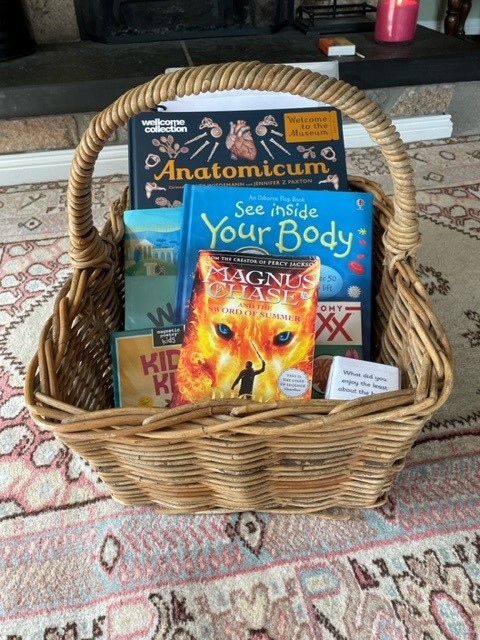
As I prepared to home educate, one of the ideas I came across was the Morning Basket. I have to say, I was a little skeptical. Everyone sits together, sharing books on a range of subjects, poetry and perhaps games to start the educational day. I wanted routines and schedules that worked in the home, not an invitation to sit around chatting for an hour every morning. I watched videos which proclaimed this an important educational tool, but I suppose my mindset was still rather ‘schooled,’ – wasn’t this the ‘dead-time’ I’d been scared of creeping in to my classroom? As I reflected on that, I recognised that one of the reasons I wanted the children to experience life outside school was for the joy, growth and peace that comes from the so-called ‘dead time.’ So I gave Morning Basket a try. It has become a lovely part of our home ed life and I’d like to share the reasons why it works for us.
It Marks the Start of the Educational Day
The transition from Harrased-Morning-Routine-Mum to Calm-Patient-Home-Ed-Mum can be a bit rough for me. And if its rough for me, it has to be rough for the children too! Morning Basket is a chance for us all to take a deep breath, relax and get ready for a shift in tempo as we move into learning for the day. It has proven itself to be the perfect transition for us.
Begin with Connection
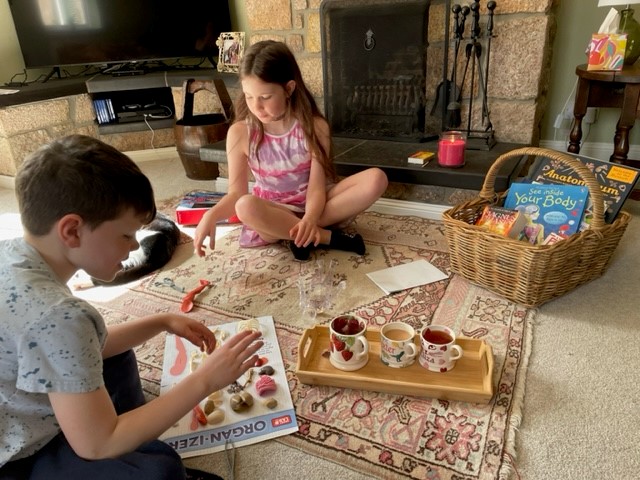
In recent years in the state school I worked in, we began greeting each child individually at the classroom door every morning. We could say hello, wave, fist bump or hug, whatever was comfortable for the child. The idea behind this was that a connection between child and adult was made first, before any tasks were set or work expected. Morning Basket serves the same purpose at home for us. First thing in the morning, our house, like most family homes, is filled with the rush of getting ready for the day – eating, washing, dressing, feeding pets and getting some house tasks done. The children are as busy as the grown ups (even if they need reminders – see the Harassed-Mum mentioned above!). But we know that once the chores are past with, we will sit down together and connect over good books and games.
There are some days that I have to ask the children just to get on with their main tasks of the day and skip Morning Basket. I notice a difference in how co-operative and ‘ready to learn’ the children are on those days. They still get on with their tasks, but it isn’t quite as smooth and it’s more likely they will complain and push back. I believe this is because we skipped the connection and went straight to the demands of learning, so it is a situation I try to avoid.
Include those Easy to Miss Extras
I know from my experience as a teacher that it it can often be the fun things that are bumped off the timetable in the pressure to ensure the written academic work is completed. I have found that if I start the day with the extras, they won’t be missed out.
Like many educators, I am keen for my children to do a substantial literacy and maths task every day. The way we tackle this for my children aged 9 and 10 is often through textbooks, workbooks or an extended piece of writing. I feel these literacy and numeracy tasks are important and as such, they are built in to our routine. However, there are other tasks that are important to me and my children – topic learning, languages and health or simply enjoying a good book together. A Morning Basket is a great way to include those extra things that make education more complete and engaging.
I also appreciate our Morning Basket time as a time for the children to listen to me reading. Now they are getting older their evening activities and clubs are later and often there isn’t time to sit together and read before bed. Morning Basket offers us time to connect over a story every day.
Morning Baskets help to Create a Cosy Atmosphere
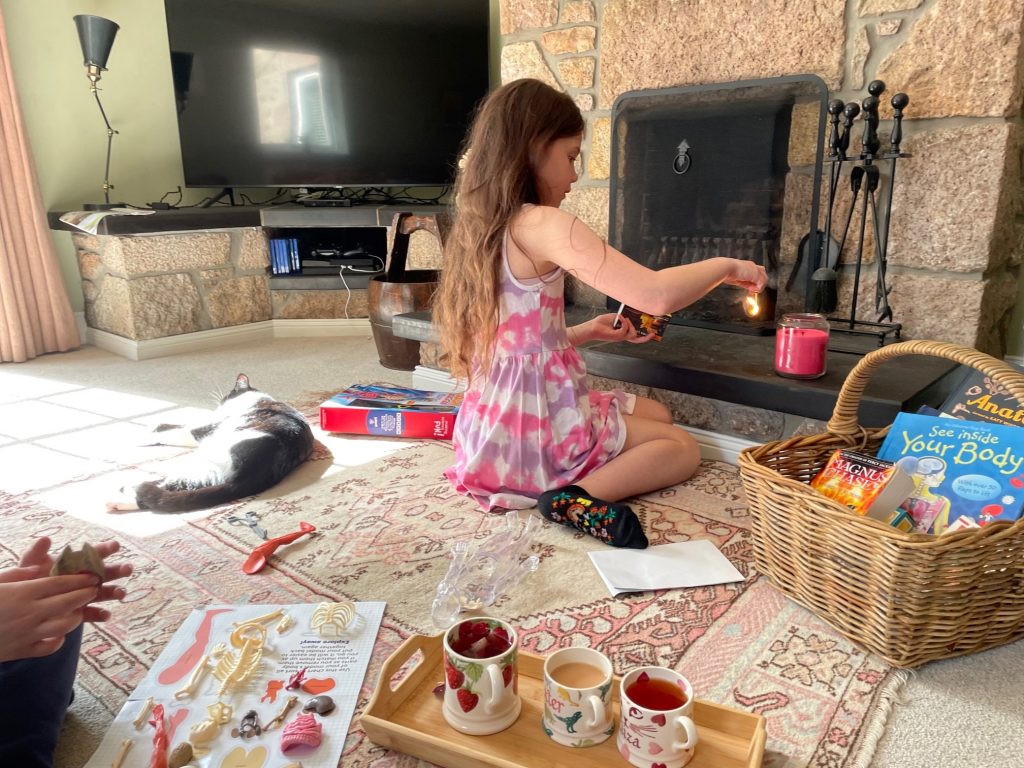
As I prepared to home educate, I journaled as a way of trying to make sense of my reasons and set out aims for our family if we were to home educate. One of things I wrote down that I’d like for my children is for them to be able to learn in comfort. I don’t want to give the impression that every moment is cosy and magical while the children are learning, but I do think a few touches can create a happy and relaxed atmosphere that sets up a calm working day.
I will share more details of how I set up our Morning Baskets in a later post, but ‘add-ons’ to our Morning Basket time include: cosy blankets, an open fire, tea and candles. The cat usually joins us too. (Strangely, the cat only ever wants to sit on my knee when I’m reading aloud!) These don’t all happen every time; sometimes its just the blankets, other times just a cup of tea. In nice weather we abandon all of those things and take it into the garden. It is a relaxing but structured and purposeful start to the day.
As I mentioned, I will give more details of the content of our Morning Basket in a later post. Please let me know in the comments if you use a Morning Basket and why you were drawn to doing so. I know it is much more common in the US and I wonder how other UK home edders find Morning Baskets.
